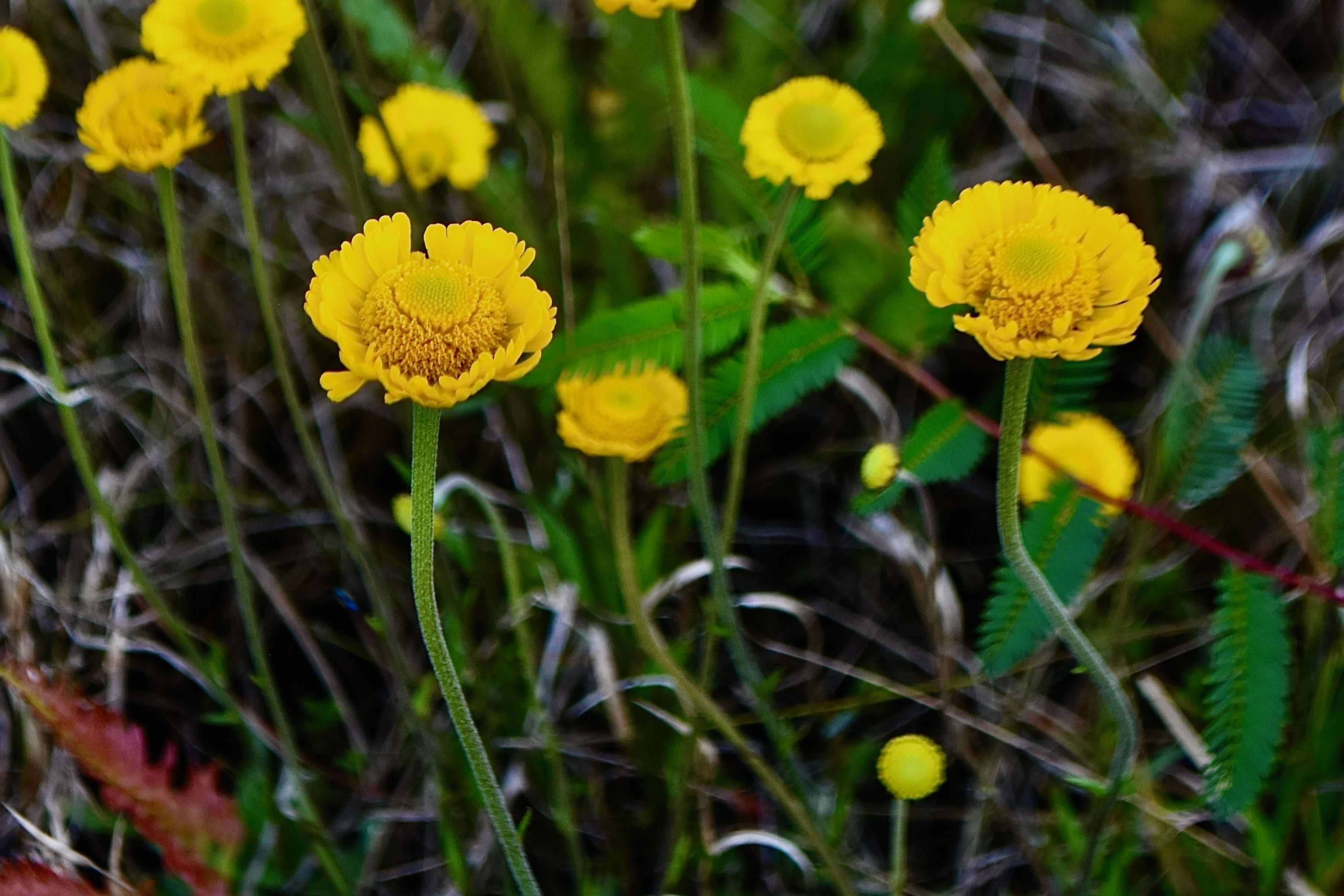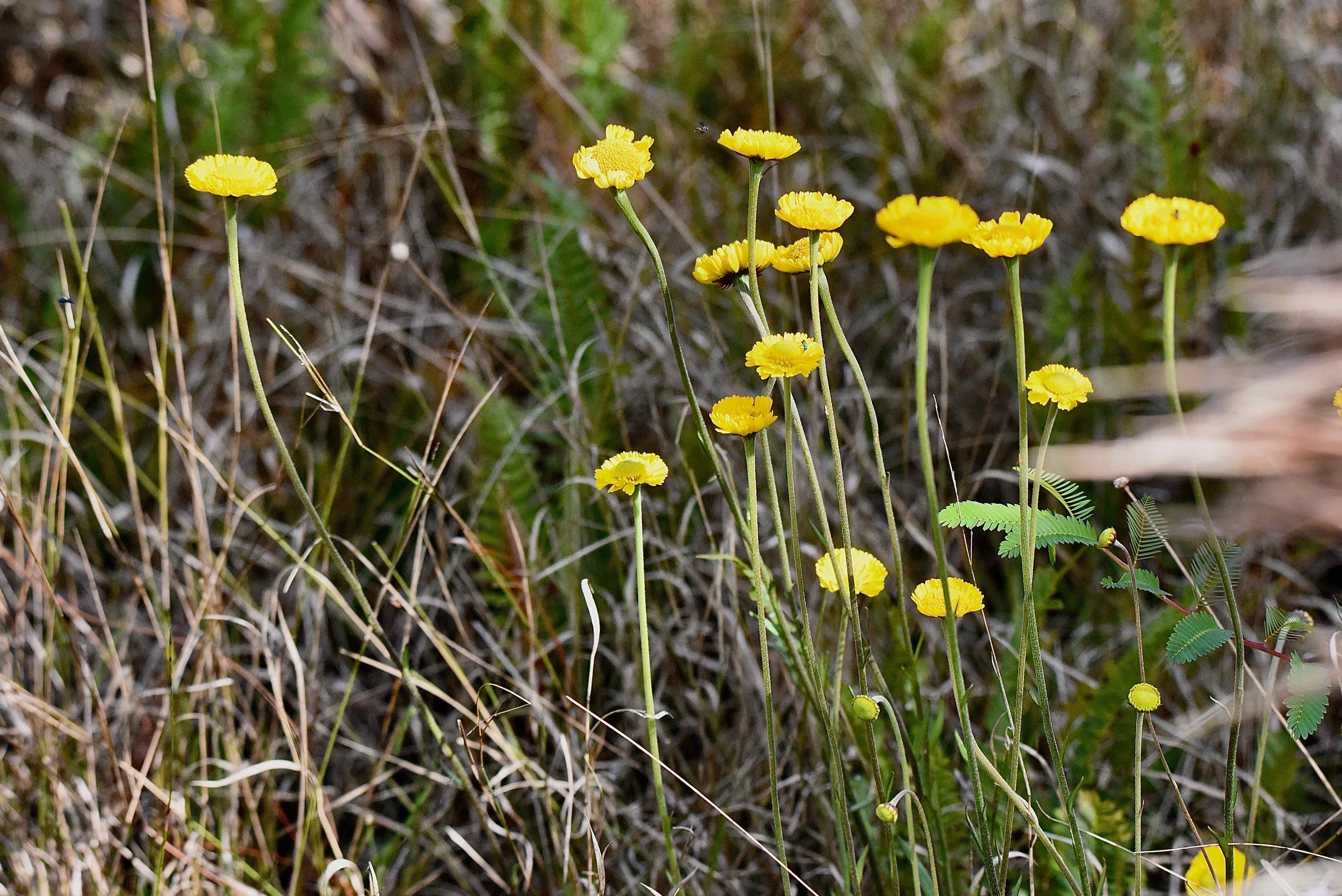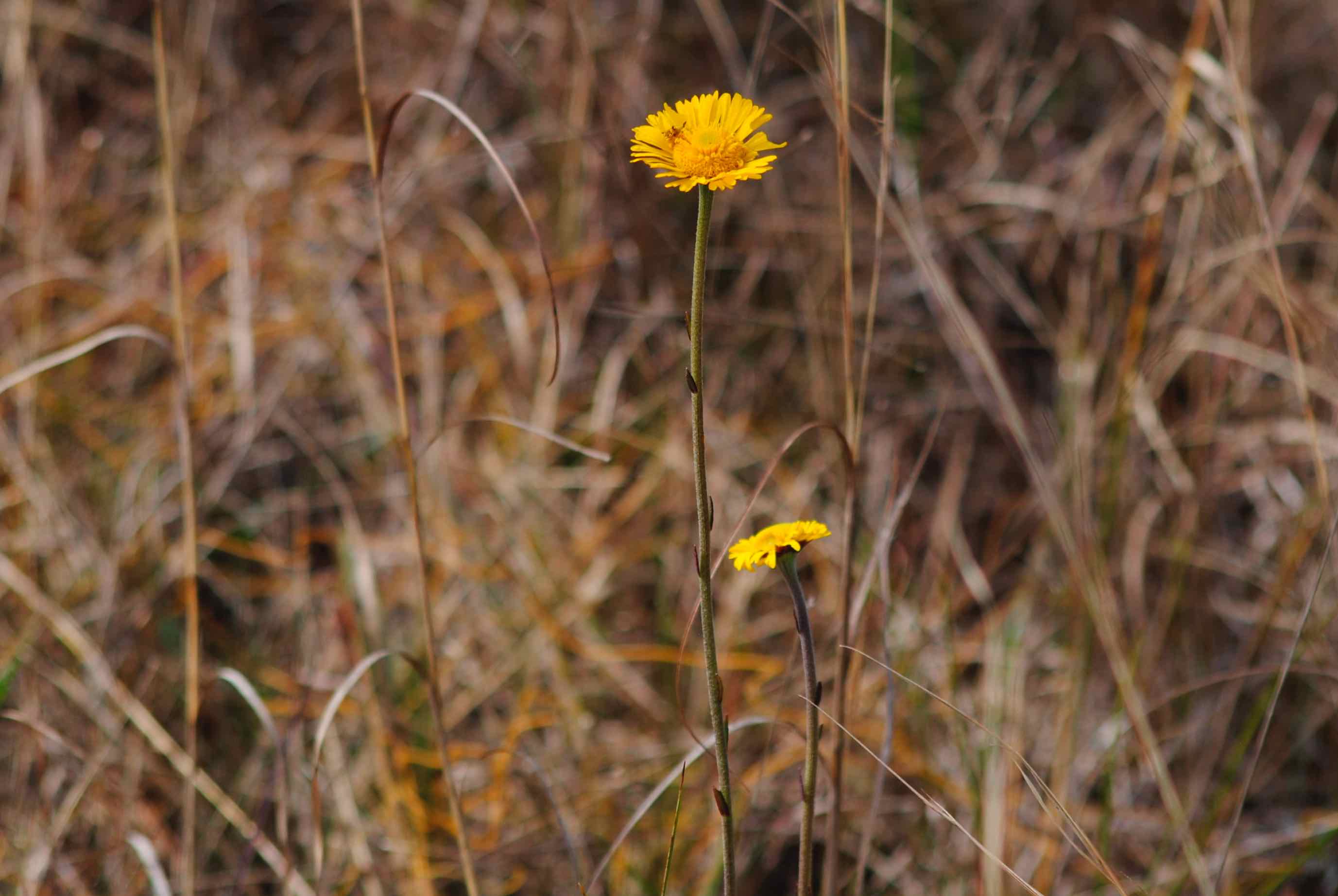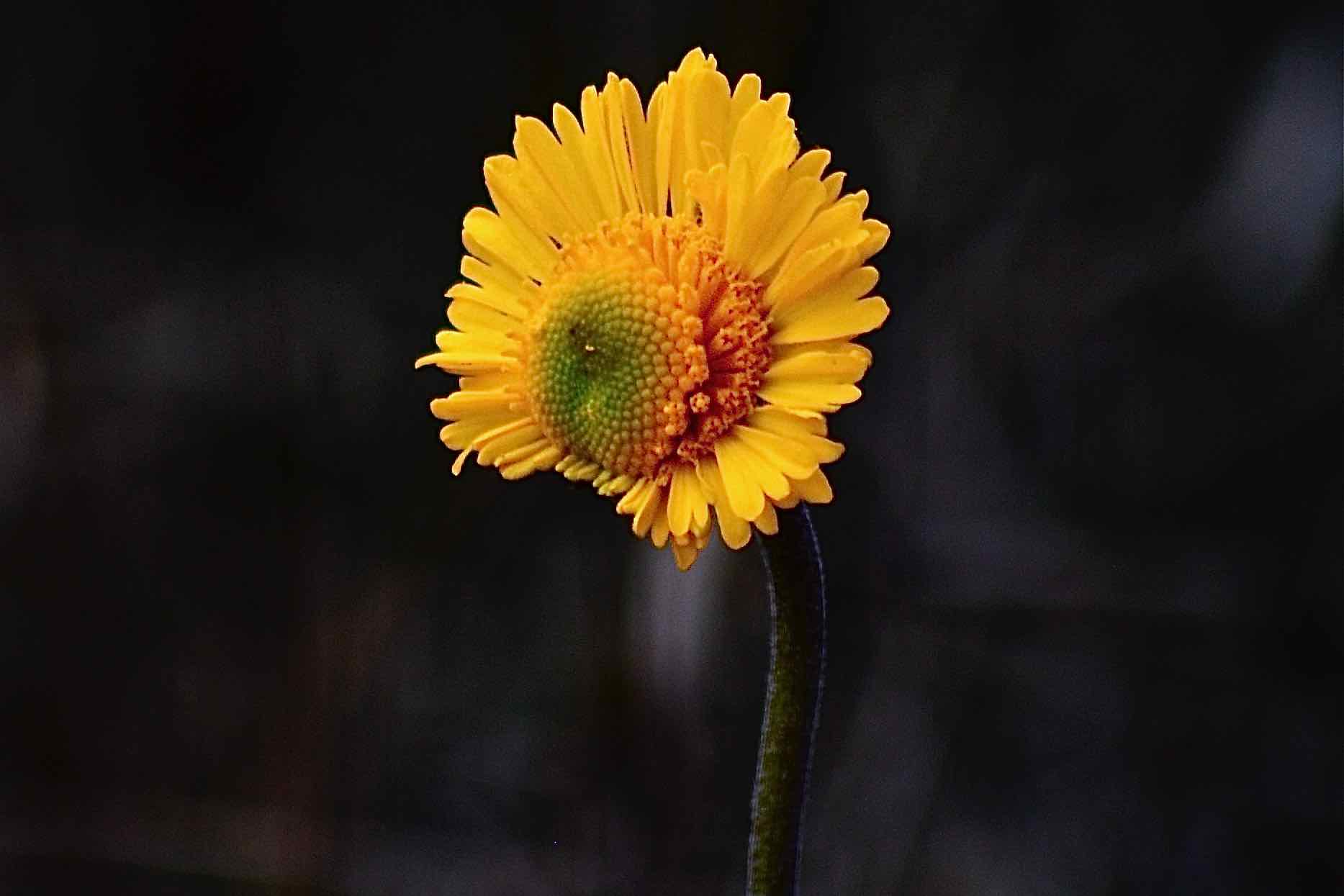
Southeastern sneezeweed, photographed at Sweet Bay Natural Area, West Palm Beach, Palm Beach County, in February 2020.
Southeastern sneezeweed, Helenium pinnatifidum, is a beautiful flower with an incredibly unfortunate name. It’s not likely to make anyone sneeze and as best we can tell, it certainly isn’t weedy. It is, however, a denizen of the Southeast.
It is a Florida native, found throughout most of the Peninsula and in some Panhandle counties. Its range extends into Alabama, Georgia, South Carolina and North Carolina. It’s found most extensively in Florida and Georgia.
It gets its name apparently from one of its cousins, common sneezeweed, H autumnale, which is found pretty much over most of North America including central Florida. According to Sue Trull of the U.S. Forest Service, the Menominee tribe of what is now Wisconsin called common sneezeweed “a’latci’a ni’tcikun” or, translated, “sneezing sporadically.” Sneezeweeds, including our guy, are insect-pollinated as opposed to wind-pollinated, so they really don’t bother anyone, even those with allergies. However, the Menominee would crush the dried leaves and flower heads of sneezeweed to make a medicinal snuff of sorts that was used to induce sneezing in order to rid the body of evil spirits, or just plain loosen head colds.
Best we can tell from our research, the natives of Florida never used southeastern sneezeweed to make snuff or for any other use, for that matter. It is cultivated but used mainly for restorations and natural landscapes. There are more than 40 sneezeweed species, many propagated for their lovely flowers and incorporated into landscapes.
Southeastern sneezeweed is found in wet habitats, including flatwoods, pine rocklands, wet prairies and the edges of swamps and marshes, places with nutrient-poor soil. It lives in full sun and is not drought tolerant.
When not in bloom, it’s an inconspicuous collection of leaves arranged as a rosette, an inch to three inches off the ground. In bloom, it will send up a thin stalk that can reach 16 inches tall. Atop the stalk is a single yellow flower an inch to an inch-and-a-half across. It blooms mainly in the spring, as early as February in South Florida (the photos on this page in fact were taken in February, though in different years), but can bear flowers year-round. Farther north in its range, it begins to bloom as late as May. The flowers have 13 to 34 tri-lobed petals, each of which is an individual floret; the center disk, which can be more orange than yellow and sometimes shows some green as well, is also comprised of individual florets, or tiny flowers. They somewhat resemble blanket flowers and blackeyed susans, but those two are generally found in dryer places than sneezeweeds.
The genus name, Helenium, is a reference to Helen of Troy, daughter of Zeus and Leda; the species name, pinnatifidum derives from the shape of the leaves, which have deep clefts, or cuts in them, nearly to the midrib, or center vein. It is an annual, and the Institute for Regional Conservation considers it rare in South Florida. There is one other Helenium species native South Florida, purplehead sneezeweed, found in Everglades National Park, which the IRC says is imperiled.
Southeastern Sneezeweed is a member of Asteraceae, the daisy family.



